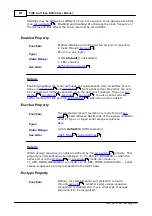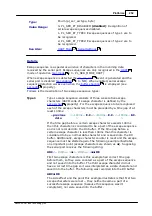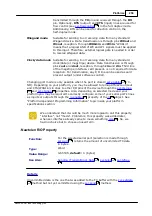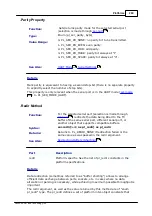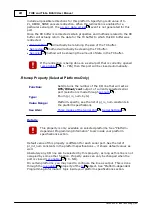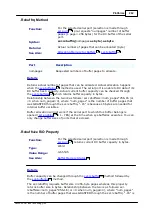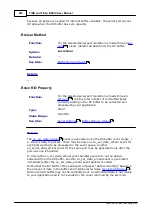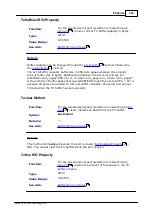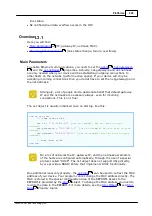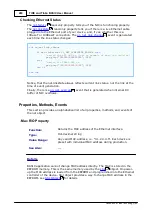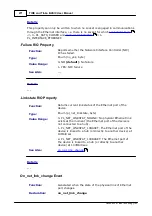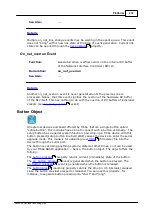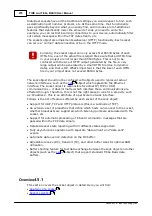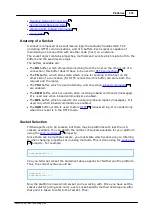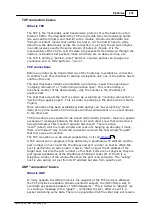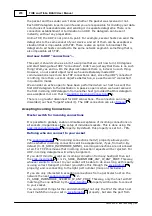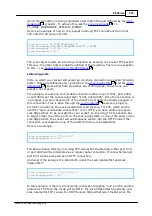
265
TIDE and Tibbo BASIC User Manual
©2000-2008 Tibbo Technology Inc.
.Sinkdata Property
Function:
For the currently selected serial port (selection is made
through
) specifies whether the incoming data
should be discarded.
Type:
Enum (yes_no, byte)
Value Range:
0- NO (default): normal data processing.
1- YES: discard incoming data.
See Also:
Details
Setting this property to 1- YES causes the serial port to automatically discard all
incoming data without passing it to your application. The
event will not be generated, reading
will always return zero, and so
on. No data will be reaching its destination even in case of
.
, however, will still be detected in the incoming data stream.
.Txbuffrq Method
Function:
For the selected serial port (selection is made through
) pre-requests "numpages" number of buffer
pages (1 page= 256 bytes) for the TX buffer of the serial
port.
Syntax:
ser.txbuffrq(numpages as byte) as byte
Returns:
Actual number of pages that can be allocated (byte).
See Also:
,
Part
Description
numpages
Requested numbers of buffer pages to allocate.
Details
Returns actual number of pages that can be allocated. Actual allocation happens
when the
method is used. The serial port is unable to TX data if its
TX buffer has 0 capacity. Actual current buffer capacity can be checked through
the
which returns buffer capacity in bytes.
Relationship between the two is as follows: ser.txbuffsize=num_pages*256-16 (or
=0 when num_pages=0), where "num_pages" is the number of buffer pages that
was GRANTED through the ser.txbuffrq. "-16" is because 16 bytes are needed for
internal buffer variables.
Buffer allocation will not work if the serial port to which this buffer belongs is
opened (
= 1- YES) at the time when sys.buffalloc executes. You can
only change buffer sizes of ports that are closed.
257
245
258
263
245
236
257
239
262
217
266
251

